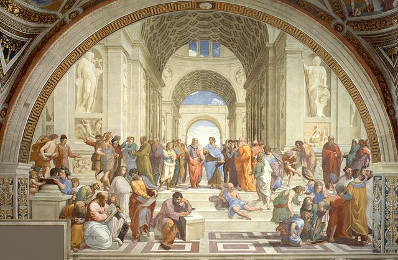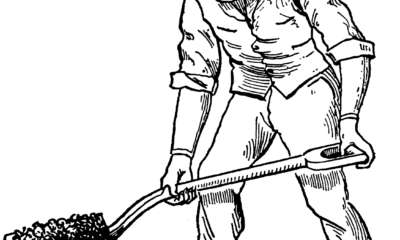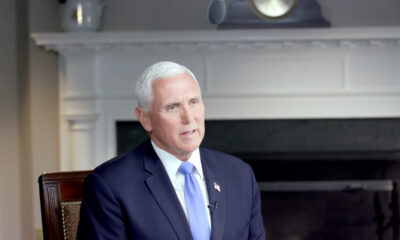Entertainment Today
Philosophy and theology in Star Trek

Fifty years of Star Trek definitely touched on philosophical issues. But the absence of treatment of religious issues speaks volumes about religion in Star Trek. This article will assess the philosophy, the theology (or lack thereof), and the social mores of Star Trek.
Philosophy and theology in Star Trek
The world of Star Trek has no place for religion. None. Except for one incongruous animated episode1, humans don’t even celebrate Christmas or Resurrection Day. No one believes in the God of the Bible, or even in the Allah of the Qu’ran.
Evolutionism
This should surprise no one. The Star Trek world claims proof of all three teeth of the Grand Evolutionary Trident: uniformitarianism, abiogenesis, and common descent. (One episode of The Next Generation suggested support for directed panspermia. But the alleged “Progenitors” did not, after all, found other races. They merely left parts of a message in the genomes of four prominent races to promote peace. Their effort failed.2)
That embrace of evolutionism leads to profound secularism. Secularism dominates all systems of philosophy in the Federation and all its member societies. Where secularism does not dominate, the Federation tends to subsume any religion or religious philosophy after first contact. So much, then, for the “Prime Directive.”
Exceptions
But Star Trek does make two important exceptions. Klingons still “cling” to a warrior’s idea of heaven. They call it Stovokor, and reserve entry to those who fall in honorable battle. A dead person’s friends could win entry into Stovokor for their friend by fighting and winning a glorious victory in the friend’s name.3 But the usual pathway to Stovokor ends in death in combat.
Bajorans inhabit the recently free world of Deep Space Nine. They worship a group of gods they call The Prophets. These Prophets do not perform any creative role. They more closely resemble the Hindu pantheon of the Rig Veda, or the Norse Aesir without distinguishing personalities. The “Celestial Temple” where these Prophets live, has more in common with the Norse realm of Asgard. These Prophets have their own deadly enemies: the Pah Wraiths, akin to the Norse Jötnar.
A basis in fact?
This religion survives only because in fact Asgard and the Aesir have real counterparts. The Prophets turn out to be a group of spirit beings who can talk to flesh-and-blood people. They live in, and maintain, a “wormhole” connecting two vast regions or quadrants of the Galaxy. Incredibly, these particular Aesir single out a human being, an officer-in-charge of a former orbiting factory complex, now become a Star Fleet fortress. The Aesir select him as their Emissary, though he never once thought spiritual beings could ever be more than mythical.
Over the course of seven years, this officer learns differently. At the show’s end, he literally dives into hell itself—or at least the latter-day Jötunheimr—to carry a Jötunn-infested enemy with him. The Aesir then rescue him and induct him into their own ranks. So the gods do not have their downfall, as Richard Wagner expertly dramatized. These Aesir still live—but only after Siegfried, and not Brünnhilde, gallops into the flame.
Works salvation
Both these pseudo-religions offer works salvation. Stovokor sounds like a jihadist’s idea of heaven. And of those Viking-like Aesir and Jötnar, the less anyone says, the better. This is the grudging place the Star Trek world has for people of faith. Stovokor serves the need of the Klingon Empire to encourage people to keep fighting—whether the Federation or the Gamma Quadrant Dominion. The Bajoran Prophets offered a little Viking courage to a resistance movement.
Again, only because these Prophets turned out to be real, does any non-Bajoran respect them. And even then, they prefer to call them the Wormhole Entities, a secularist name. Even Captain Sisko prefers that name, until he gets hot and heavy in their war with the Pah Wraiths. And he gets constant “flak” from the admirals for indulging these backward-thinking Bajorans in their religious fantasy. Which is to say, his superiors do not want him to respect an establishment of religion. Not even on a non-member world do they want him to do this.
No point in belief
All other faiths serve no purpose. With one other possible exception: Surak’s logic discipline resembles Buddhism. Surak offered a devotion to logic because his people’s emotions ran as hot as the high desert of Vulcan’s Forge. In the grip of those emotions, they devastated their world and almost annihilated themselves, like the whiteblack and blackwhite races of Chiron. Of course, Star Trek lore does not say one word about whether the competing philosophies behind those hot emotions had any basis other than simple tribalism.4
Social mores
The secularism of Star Trek carries forcefully into the social realm. Oddly, marriage in Star Trek society still respects the traditions of any particular species. Interspecial marriage requires nothing more than mutual respect. This might explain why Star Fleet forbids starting an interspecial relationship before clearing it with one’s superior(s).
The successive producers must never have lost their romantic streak. How else to explain Klingon mating rituals that begin with an extra-deep love bite? Or the survival, even into Federal times, of the Vulcan custom of koon-ut-kal-if-fee? In that custom, two men competing for the love of the same woman can settle that dispute in trial by combat.
Consenting adults
In contrast, Star Trek features at least one race with a group-marriage custom. That custom might turn that society into a vast interlocking marital fellowship.
But Star Trek also makes no attempt to disrespect those who “hit on” others. Two words apply here: consenting adults. Adultery might not be rife, but fornication certainly prevails. So also does abortion. (Though in fairness, some of the most poignant stories have featured pregnant women desperately trying to save the children. Some are willing even to die for their sakes.) A few things exist that heroes and anti-villains do not stand for. One of these is rape.
Homosexuality
Male-to-male
Nor did Star Trek shy away from “alternative lifestyles.” The closest the canonical body of Star Trek work came to promoting male-to male homosexuality was the intense buddy relationship between Chief Miles E. O’Brien and Lieutenant Julian Bashir, M.D., on Deep Space Nine. Where does “buddy-buddy” end and homosexuality begin? The producers and writers came so close that fans actually speculated, on the Internet Movie Database, on Miles and Julian getting married—to one another.
At least that does not happen. Miles stays married to his Japanese wife as they return to Earth. (He goes to the Academy to teach.) Julian marries a Joined Trill – more on that below. But the two still hug one another as their buddy-buddy friendship must end.
Female-to-female
Female-to-female homosexuality gets a more explicit treatment. A Bajoran militia officer takes a detour into a vicious parallel universe—and meets her counterpart.5 That counterpart knows exactly where this officer came from. She then proposes a marriage of state between them. But the “regular universe” woman demurs. Not because she couldn’t possibly reciprocate. Rather, she demurs because she does not share the motives, (non-sexual) morals, or attitudes of the other.
Now perhaps the producers chickened out here. The Dark Universe counterpart turns out not to be an exclusive homosexual. She is instead a switch-hitter. And a most promiscuous one. And a villain, hence a non-inspiring example.
Trill law: a special case
The Trill throw in another complication. Technically, Trill law forbids a Joined Trill to renew any relationship between symbionts who earlier had married or cohabiting hosts. But that does not stop a female Trill host, after her Joining, from trying to renew such a romance. The earlier host was male, and he romanced a human female. Then he died and passed the symbiont on. Now the new, female host wants to continue the relationship. The human demurs—and apologizes for not being ready to accept a relationship on such terms.6
Reassociation
Another regular character, a female Joined Trill, openly proposes to marry another female Joined Trill. The circumstance: the earlier female host of the other symbiont married the earlier male host of the first person’s symbiont. So a male-female marriage will renew as a female-female marriage. This does not happen—because the other Trill will not risk the penalty. Trill law provides permanent banishment from Trill society, and the likely death of both symbionts, as punishment. (Trill symbionts often live for centuries and usually go through many hosts, male and female.)
After that rebuff, the first Joined Trill solves her problem with an interspecial marriage. She seeks out and woos the only Klingon ever to join Star Fleet.7
Liberty or license?
Thus Star Trek stops short of promoting adultery. But it promotes fornication and “gender bending” and almost promotes homosexuality.8 These things follow from a philosophy that disdains religion, except for Viking analogues. Religion provides the moral compass of a society. Without it, who can judge a given attitude or behavior moral or immoral?
But the producers forgot one thing above all. If people have no moral compass, they have no rights, either. That’s why the Articles of Federation do not guarantee rights as Thomas Jefferson defined them.9 Hedonistic license is not liberty. A license does not confer rights; it merely allows behavior. So the same philosophy that grants license, even without limit, cannot respect rights. Likewise, an economic system that allows material goods without limit cannot respect anyone’s right to them.
License for liberty represents a poor trade. Too few fans of Star Trek, and none of its writers, seemed to realize that.
Endnotes
1“The Survivor” in the animated series
2“The Chase” in The Next Generation
3See “Shadows and Symbols” in Deep Space Nine.
4This speaks directly to the tendency of leftists today to embrace communism. They hold communism and capitalism equally able to produce wealth. All that matters then, is to distribute it to their liking. And this becomes “logical” to them.
5“Crossover” in Deep Space Nine
6“The Host” in The Next Generation
7“Rejoined” in Deep Space Nine
8A non-canonical video producer tried to explore open male-to-male homosexuality between two Enterprise crew members. That provoked such disgust that he closed all comments.
9See the Declaration of Independence.
Terry A. Hurlbut has been a student of politics, philosophy, and science for more than 35 years. He is a graduate of Yale College and has served as a physician-level laboratory administrator in a 250-bed community hospital. He also is a serious student of the Bible, is conversant in its two primary original languages, and has followed the creation-science movement closely since 1993.
-

 Civilization4 days ago
Civilization4 days agoDC Pipe Bomb Arrest Raises Questions About Christopher’s Wray’s FBI
-

 Civilization5 days ago
Civilization5 days agoThe Legal Logic Behind U.S. Operations Against Narco-Terrorist Networks
-

 Executive5 days ago
Executive5 days agoNewsom’s ‘National Model’ for Homeless Wracked by Fraud
-

 Executive2 days ago
Executive2 days agoWaste of the Day: Obamacare Failed Test, Approved Fraudulent Subsidies
-

 Executive4 days ago
Executive4 days agoWhen You’re in a Hole, Stop Digging
-

 Education3 days ago
Education3 days agoWaste of the Day: Taxpayers Subsidize Football Coach Severance
-

 Civilization3 days ago
Civilization3 days agoPence Calls on Trump To Fire RFK Jr Over Abortion Drug
-

 Civilization3 days ago
Civilization3 days agoRight-Wing Antisemitism, Liberalism, and Leo Strauss















I agree with the overall premise of this, though I’m not sure if Thomas Jefferson didn’t agree with license and/or equate it with Liberty, especially when he DID promote the September Massacres (as evidenced by the Adam and Eve letter), which was the point where most of the Founding Fathers turned against the French Revolution (with George Washington even declaring neutrality in spite of Jefferson’s insistence that we aid the French in their revolution). Yes, he wrote the Declaration of Independence, but he also had a hand in writing the Declaration of the Rights of Man and the Citizen, which was practically THE document dictating that liberty and license were falsely equivalized as being one and the same, the starting point arguably (as you can read here: link to constitution.org). And did I mention that both Jefferson and Thomas Paine expressed vocal support for the French Revolution, and in the case of the latter, directly aided in its occurrence?
Other than that tidbit, I’m going to say good job overall.
Question: did either of them stick with the French Revolution, as the horrors dragged on? Seems to me Jefferson was spoiling for a war with France, after the Directory had succeeded to the Robespierre gang. See the XYZ drams. John Adams, however, said, “No.”
Anyway, it occurred to me – as I was watching the episode “A Nice Place to Visit” (with Larry Blyden and Sebastian Cabot) in The Twilight Zone – that civilian life in the Star Trek world must be pretty boring. You have everything you could want. After awhile, it becomes worthless. (See Ecclesiastes.) Unless you’re trying to better yourself, in which case the authorities might arrest you for illegal tampering with your genome. (That’s coming up next.) The Federation governs a population of sheep. The only real escape is to join Starfleet. And the only people in Starfleet who really had a worthy challenge, were the crew, not of any ship named Enterprise (though that came close), but of Voyager.
Regarding your first point regarding whether any of them stuck with the French Revolution, we know that Jefferson at least stuck with them as late as the September Massacres since he practically advocated for it in his Adam and Eve letter (in fact, that’s where the phrase of “watering the tree of liberty with blood spilt of patriots and traitors” came from: link to theatlantic.com; you can also read/watch more here: link to the-american-catholic.com here: link to the-american-catholic.com and here: link to the-american-catholic.com). Hope that about covers it. You could also read up on Liberty: The God that Failed by Christopher A. Ferrara if you wish.
And can’t wait to see your other two remaining posts.
Sorry for my reply being separate from the comment stack, the reply button’s getting wonky.